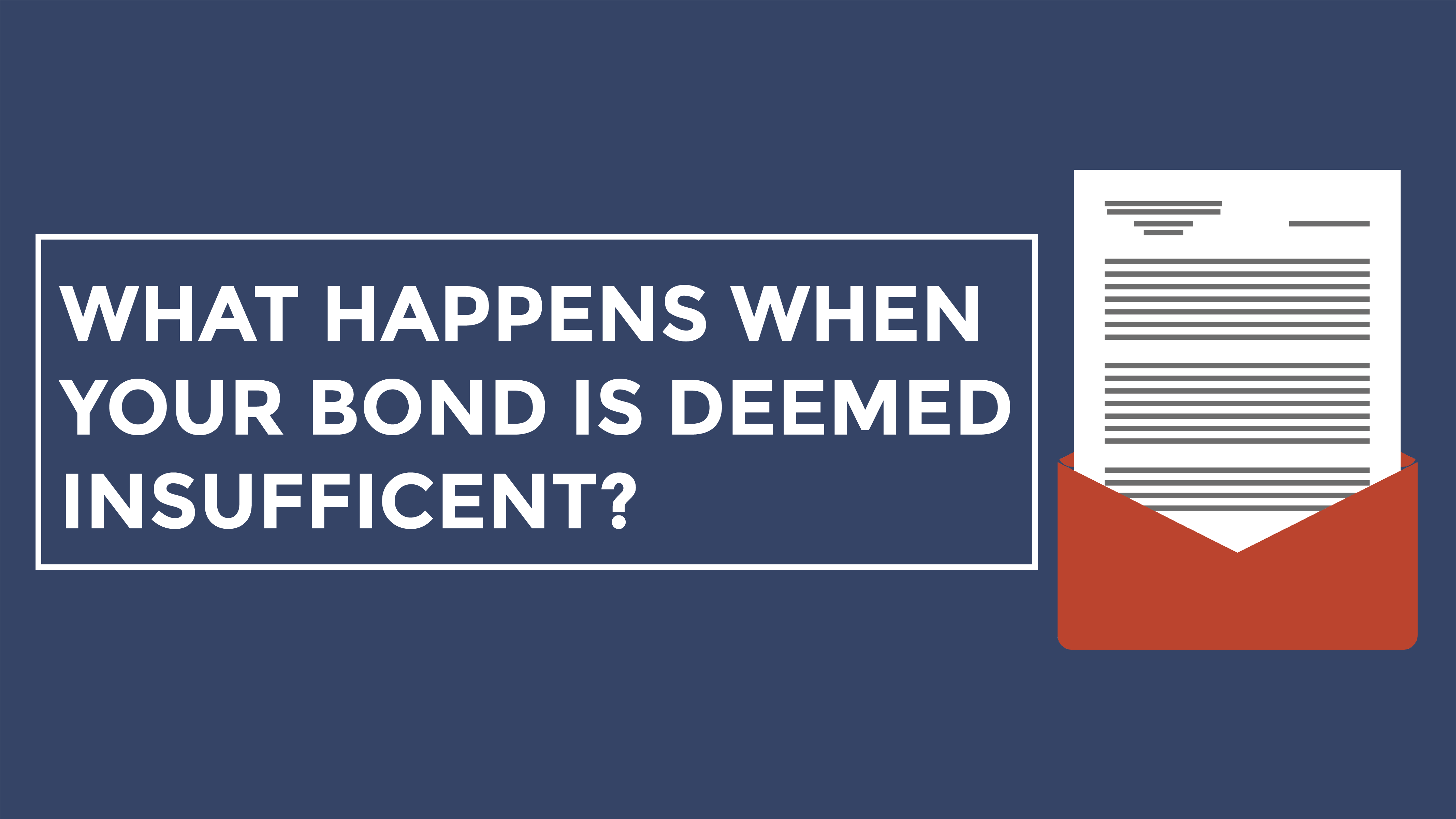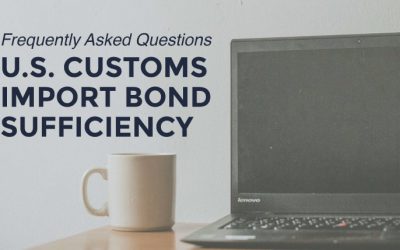In an educational video, Trade Risk Guaranty explains what is included in a U.S. Customs Bond Insufficiency Letter and what each section means.
U.S. Customs Bond Sufficiency continues to be a primary concern as U.S. Customs and Border Protection moves into a new year. However, the topic remains as confusing as ever for many importers especially those that have received an insufficiency letter. In order to explain what happens when your Customs bond is deemed insufficient, Trade Risk Guaranty has created a short video to explain what to expect and what the information contained in the insufficiency letter means.
What is a Bond Insufficiency Letter?
CBP periodically reviews each bond on file to determine whether it is adequate to protect their revenue and ensure compliance with applicable law and regulations. If they determine that a bond is inadequate, the principal and surety will be notified in writing. The written notice is known as an ‘insufficiency letter’ and it will inform the importer on what the MINIMUM bond increase must be, when the bond will be rendered insufficient, and a general reason for the insufficiency.
For a more in-depth visual breakdown of an insufficiency letter, see our previous blog post on Understanding an Insufficiency Letter for Your Customs Bond.
The Minimum Bond Increase on an Insufficiency Letter
Since CBP is only looking back at your importing history over the past 365 days, they will require a minimum bond increase based only on that historical information. Meaning that if you, as the importer, know that the duties, taxes, and fees you pay will continue at a higher or increased rate, you should forecast into the future to determine if an even larger bond size is appropriate than the minimum stated directly on the insufficiency letter.
It is important to correctly forecast the size of the bond before placing the new bond because CBP does not allow for the bond amount to be amended once the bond is in place. In the event that you only increase to the minimum and then quickly exceed that new bond’s capacity, Customs will deem the new bond insufficient and require an even larger bond to be placed. This can lead to issues such as stacking liability and the mandatory placement of collateral when placing a new bond. Both of which lead to more cost incurred by you, the importer.
Date of Official Insufficiency
Although CBP is not required by law to do so, most insufficiency letters will also inform an importer on when the bond will officially be rendered insufficient. In most cases, the importer will have a specific number of days to terminate the current bond and get a new bond in place. This could be 15 days or 30 days from the issue date of the letter. During this timeframe, entries will still be allowed under the existing bond. But, once the allotted time has passed, that bond will be deemed insufficient and entries will no longer be allowed to enter the U.S. until the new sufficient bond is placed. Don’t forget, that it takes 15 calendar days to terminate and replace a U.S. Customs Bond, so do not wait to get the process started.
In rare cases, Customs will have already rendered the bond insufficient at the time of issuing the insufficiency letter. In these cases, an importer will need to terminate the current bond and get a new bond in place as quickly as possible to avoid further delays in their entries.
General Reason for Bond Insufficiency
The exact placement of the reason on the letter may vary, but in this section Customs will point you to a web resource that will state the reason for the increase and specifically mentions a formula described as either ‘Reviewers (1)’ or ‘Analytical (2)’.
Remember to see our previous blog post on Understanding an Insufficiency Letter for Your Customs Bond for a more in-depth visual breakdown of an insufficiency letter.
Learn About the Different Sections of a Bond Sufficiency Letter
Watch the video below for a more in-depth breakdown of what you can expect to see in a sufficiency letter sent by U.S. Customs and Border Protection.
Did you like that video? Subscribe to our YouTube Channel for instant access to the next videos in the Bond Sufficiency series.





![[Webinar] How Could Changes to De Minimis Impact Your Company?](https://traderiskguaranty.com/trgpeak/wp-content/uploads/2025/05/trg-how-de-minimis-impacts-customs-bond-webinar-400x250.png)

![[Webinar] United States Reciprocal Tariffs – The What, Why, and How](https://traderiskguaranty.com/trgpeak/wp-content/uploads/2025/04/trg-webinar-reciprocal-tariffs-400x250.png)